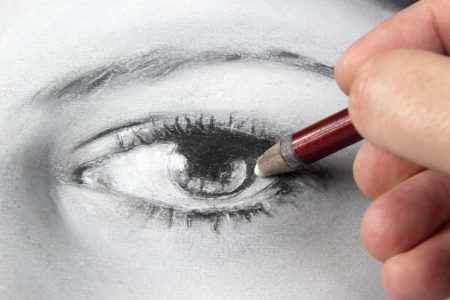
The Similarities Between the Processes of Drawing and Translation
by Chad Richardson
When you’re translating something, you may think that the process seems pretty simple. It’s like copying a picture from one piece of paper onto another. You can do it by dividing the original drawing and a blank piece of paper into smaller squares. It’s easier to copy the contents of one small square into another small square. Most people have the spatial skills necessary in order to do this.
But not everyone has what it takes to just draw what they see, free-hand, without any external aids. It takes true artistic skill in order to do this. And this is actually what is needed for a good translator as well.
Dividing the Drawing into Squares
Even a translator can translate a document by dividing it into squares. In this case, the squares stand for the individual words or phrases of the document. You can take a word in the original document and translate it, either from your memory or by using a dictionary. You can do this word by word. If you come across a phrase that you are familiar with and know that it means something other than the individual words, you can substitute the meaning of that phrase.
Nearly anyone can do this. But the result isn’t going to be exactly what you wanted, at least not when it comes to translation. You’ll end up with a mishmash of words and phrases in the wrong order. And even when it comes to sketching, this will just give you a facsimile of the original. It’s not going to capture the feel of the original drawing. Nor will it capture the gestalt of the subject.
Drawing the Subject Freehand
Consider the other process, in which the artist draws from a live figure or even from a photograph/picture but doesn’t use squares. In this case, the artist gets a chance to take in the entire feel of the subject. Even if you’re just drawing a subject’s face, you can still see their whole body. Plus, if you know them well, you will be familiar with their expressions and these might automatically get expressed in their portrait.
Similarly, when a translator who knows both, the source and destination language, translates a document, they’re going to read the whole document, understand its meaning and then settle down to translate it sentence by sentence. This will help them to express what the document is really trying to say.
Contact us for more great tips to translate your document in a way that captures its entire meaning.
Related Articles
Why Hyper-Localization and Personalization Are Defining Global Success
Translating content is no longer the benchmark for going global; it’s the baseline. As businesses expand into new markets, what truly drives growth in 2025 is the ability to connect meaningfully with audiences through hyper-localization and personalization. These strategies are redefining how brands communicate. Hyper-localization adapts your message to reflect not just a language,…
AI-Powered LQA and Human Review: The Smartest Way to Scale Localization
Every multilingual project begins with ambition: the ambition to connect, to scale, and to meet global audiences where they are. But ambition often collides with the reality of manual language review processes that strain valuable resources. This friction delays launches and diminishes the agility brands need to thrive internationally. The answer is not replacing people…
Connecting Through Language: Why Global Brands Are Investing in Multilingual Video
In today’s digital world, attention is the most valuable currency—and it’s increasingly multilingual. For brands expanding across borders, creating content that resonates globally isn’t just a competitive advantage; it’s a business necessity. Whether you’re onboarding a workforce, educating customers, or entertaining the masses, your audience expects more than a translated script. They expect localized video…
here
for you
We’d love to learn more about your translation and localization needs.